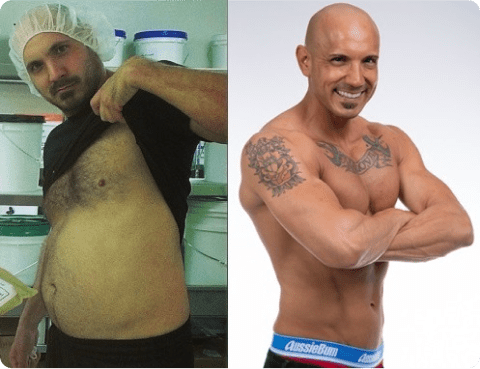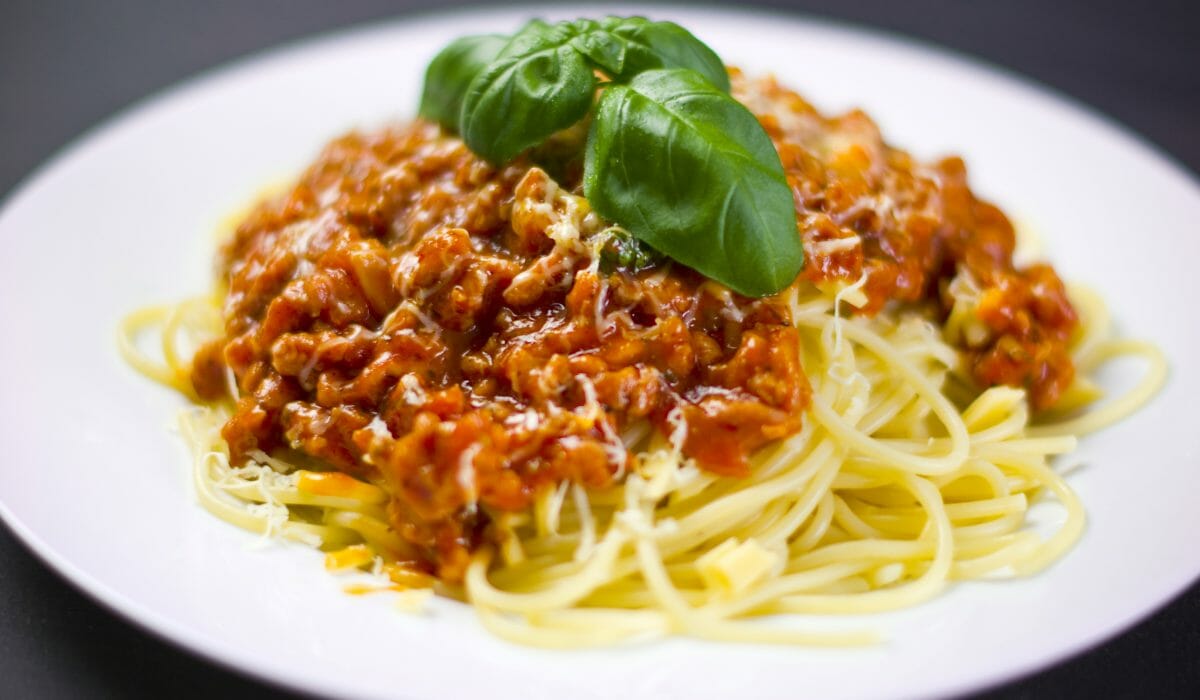
What is IIFYM? An Introduction to If It Fits Your Macros
IIFYM is a diet plan that stands for If It Fits Your Macros. It helps users lose weight by tracking macronutrients (protein, fat, and carbohydrates) without restricting food choices.
Macros are the only place calories come from, so by hitting macros, users inherently hit weight loss calories.
Our clients report that IIFYM is the easiest and most sustainable weight loss plan they have ever followed.
Many tell us that they don’t even feel like they are dieting, due to a large number of calories we often give them.
In this article, I am going to explain the ins and outs of IIFYM so that you have a full understanding of what you need to do to reach your weight loss goals in the shortest time possible while eating the foods you love.
Wondering how to calculate macros for weight loss?
At IIFYM, we provide a user-friendly Macro Calculator for Weight Loss to help you customize your nutritional intake precisely to your goals.
This tool ensures that your journey to weight loss is not only efficient but also enjoyable, allowing you to relish the foods you love.
In case you didn’t know it, you are on the world’s only authority for IIFYM and flexible dieting, IIFYM.com.
We started the trend and blew it up to what it is now. Over 30k people visit our site every day with zero advertising. Why? Like you, they have heard how thousands of people have lost weight without giving up the foods they love.
A Word From The Founder

My name is Anthony Collova and I am the founder of IIFYM.com. I am the person people go to when they have questions about IIFYM, tracking macros and flexible dieting.
I have to assume that you’ve used our TDEE calculator at our site to get your weight loss macros, and now you need a diet approach to burn fat while eating the food you love.
My team of 15 coaches, dietitians, coaches, trainers, fitness geeks and website developers and I built this website to help people just like you burn fat while eating the foods they love.
We’re great at what we do and are proud of what we have accomplished. More importantly, we are proud of what our clients (such as you) have accomplished with our method of rapid weight loss.
You’re not alone in your weight loss journey and we are here to help. We all have to start somewhere and for you, right now, it is here! Let’s begin!
The Basics of IIFYM and Flexible Dieting.
If I told you that you could eat whatever you want, and while doing so, could burn fat, build muscle, and improve your health while doing so, would you believe me?
Well, to some degree the answer has to be yes.
After all, you are on the IIFYM website so some part of you at least HOPES that everything you have heard about IIFYM and Flexible Dieting is true. I assure you it is. I just need a few minutes to explain.
See, that is why most people are attracted to IIFYM and Flexible Dieting.
They hear that they no longer have to eat just “healthy” diet food to lose weight and they are ready to jump in feet first. Pizza, tacos, and lasagna while losing weight?
SIGN ME UP!
The truth is that YES, you can eat whatever you want and still lose weight. The key is that you have to eat the right amounts. Sound complicated? Don’t worry. This is super easy, and I am about to lay it all out for you.
There is not a single scientific study in existence that proves that specific foods make you fat. The truth is that you can eat any kind of food you enjoy and counting macros will help you burn fat day in and day out!
The truth is something we all know but rarely like to think about.
Eating too much food makes us fat (calorie surplus).
Nothing else, no matter how much we want to believe that we have poor genetics, a low functioning thyroid, or a damaged metabolism, the truth is that if we eat too much, we gain weight.
The other half of that story is that if we eat too little food, we lose weight. See how that works?
Of course, you do!
So food then. Food is nothing more than fuel for our body.
We consume it much like a car does and BOOM! We have energy. But what if we could turbo-charge our bodies like we do our cars? (more on that later).
The way we measure the energy in our food is by burning it. Yup. We burn it and measure the heat, and PRESTO, we get a measurement of energy that we call kilocalories (calories for short).

Moving on to Macros
When it comes to food, there are only 4 places calories come from. You guessed it.
Macronutrients or ‘Macros’ for short, of which there are four plus one consideration*:
• Protein: 4 calories per gram
• Carbohydrates: 4 calories per gram
• Fat: 9 calories per gram
• Alcohol (not much nutrition from this one, just calories): 7 calories per gram
• Fiber
Fiber is the consideration that we mentioned above for fast weight loss. It is one of the components of the carbohydrate macronutrients, though many in the nutrition community consider it a micronutrient.
For our purposes, fiber intake should be a major consideration when calculating macros for muscle gain or to determine macros for weight loss, therefore, we include it in with the other macros.
IIFYM speaks specifically to fat loss from a macronutrients and weight loss standpoint and is purely a means to improve body composition.
We always encourage people to eat foods that agree with their bodies, so if you are allergic to something, don’t eat it!
Remember, just because you can lose weight while eating all the foods you love, doesn’t mean that all the foods you love are good for you to eat. Cool?
Regardless if you like to eat pizza or boiled chicken breasts, IIFYM teaches us that if you calculate macros for muscle gain or macros for weight loss by eating fewer calories than your body requires (while getting adequate protein, carbs, fat, and fiber based on your goals and the energy needs of your body) you will lose weight at a steady and predictable rate.
IIFYM makes fat loss that easy. All you have to do is stay within your weight loss macros and the fat will start melting off!
The Origins of IIFYM

IIFYM was haphazardly started by a few competitive bodybuilders that grew tired of eating bland and boring food when dieting for a bodybuilding contest.
The so-called “bro” or “clean” foods.
The traditional bodybuilder diet is very plain, very tasteless, and usually reduced to a handful of weight loss foods:
• Chicken & turkey breast
• Whitefish (grilled)
• Steamed vegetables
• Brown rice
• Rice cakes
• Oats
• Protein Shakes
• Egg whites
These are commonly referred to as ‘clean’ foods, and there are tons of them out there, all equally flavorless and mundane.
I am sure you can see how eating these things day after day, week after week for months on end would get extremely boring (part of the reason many people quit their diet or give up on their weight loss program entirely).
Sure, the traditional bodybuilder’s diet has been getting athletes shredded for years, but it has also been making bodybuilders miserable for just as long.
Thank God for IIFYM!
No longer are we forced to eat crap foods that only a rabbit or a bird would enjoy; now we get to eat the stuff that we always eat normally (within reason).
You know the stuff. The so-called “dirty foods”. An example of these dirty foods would be exactly what you are thinking right now.
All the foods we love to eat and are told to avoid:
• Fast food
• Fried chicken
• Pizza
• French fries
• Cheesecake
• Ice cream
• Candy bars
• Cookies
– Chicken Wings
• Pop Tarts
• Donuts, desserts, and anything else we find yummy!
All the good stuff that would surely wreck your diet if you even so much as thought about eating them. (or would they?)
Looking to personalize your nutrition precisely?
You can count on our cutting-edge IIFYM Calorie Calculator to determine the perfect balance of macros IIFYM for your goals.
Calculate your daily energy expenditure with the TDEE Calculator IIFYM and create a personalized IIFYM diet plan based on your IIFYM calories.
Make your nutritional journey efficient and enjoyable with the help of our Macro Calculator and Macro Blueprint.
The IIFYM Connection To Weight Loss
When most people start dieting, the first thing they think is that they have to ‘clean up’ their diet.
Perhaps they think that they need to start eating healthy or start eating ‘health food’ to lose weight.
After all, we as a society have been brainwashed for years about what is healthy, unhealthy, fattening, toning, good, bad, and everything in between.
Not so, says IIFYM!
Eating clean, healthy food can certainly help you lose weight and burn fat, but there is no magical connection between ‘health food’ and weight loss.
Any of my clients can verify this fact. You can eat clean all you want but that does not guarantee fat loss, especially sustainable fat loss.
The fat loss details are in the calories. Yup, calories. Something we all know about but avoid like the plague.
What I am about to say is bound to upset a lot of people. Most of the so-called nutritionists out there are more misguided than the clients they lead to ignorant metabolism damage.
Here goes:
Eating clean accidentally burns fat and causes weight loss. Kind of like how dropping a nuclear bomb on an island to kill an infestation of ants accidentally kills everything it touches.
Here is why eating clean burns fat, by accident:

When we move away from foods that we enjoy in order to clean up our diets and pay no attention to calories, we automatically reduce our calorie intake.
Removing sauces, sweets, and fried food reduces calories due to simple math. Same goes for cutting out carbs after 5 pm. No magic there. Just less food.
There is no way around it. How many calories are we cutting out? Who knows. But fewer calories, certainly (calorie deficit).
The problem is that too big of a drop in weight loss calories can cause metabolism suppression or, at a minimum, reduce metabolic capacity, which makes steady and long-term fat loss much more difficult, and in some severe cases, nearly impossible.
Usually, we end up burning muscle mass instead of fat and slide backward.
Since our daily calorie intake accounts for the majority of what our bodies look like, it only makes sense that when we restrict ourselves to clean eating, we lose weight.
Eating clean, however, is not the answer to fat loss but is simply a trick or technique that helps those who don’t calculate macros or track weight loss, to reduce them. Kind of a lazy approach if you ask me.
Lazy and boring as all hell!
If you’re looking for a more efficient and flexible approach, consider IIFYM.
Calculate your macros for weight loss using our Macro Calculator for Weight Loss.
It’s the smarter way to manage your nutrition, ensuring you achieve your goals without the unnecessary struggle.
Case Against Restrictive Clean Eating
The prominent issue when we rely on eating clean (and thus, have no idea how many calories for weight loss we are really ingesting, let alone how many our body requires).
We end up starving ourselves and line up our metabolism for a bounce back that is sure to have us putting on extra lbs. as soon as we start eating “normal” again.
And let’s face it, eating normal usually comes a lot sooner than we expect after we force ourselves to eat nothing but boring diet food for weight loss.
Part of the problem is that people, for whatever reason, think that in order to lose weight they have to starve themselves. You hear the diet scam people saying it all the time to discredit calorie counting, just so they can sell you a meal plan or program.
After all, if they can tell you that counting calories automatically equates to starvation, they have almost nearly convinced you to buy whatever scam they are selling. Don’t buy into it! You are too smart for that nonsense!
Most people, whether they are athletes or couch potatoes, know that the more you eat, the fatter you get. How can anyone deny this simple logic?
And in that same line of thinking, the more ‘crap’ you eat, the faster you get fat as well. The truth of IIFYM lies right in the middle of those two statements. MORE!!!
Moving away from rabbit food

Tracking calories with the help of a macronutrient calculator for weight loss teaches us that these so-called ‘dirty’ foods are ok to eat as long as we stay within our own required calorie intake for the day.
What bodybuilders have known for years is that everyone is different. We all have different bodies, different metabolisms, different muscle mass and a hundred other things that set us apart from everyone else on this planet.
This is where IIFYM shines. Rather than telling you how many calories you need based on your gender or even based on your weight loss goals.
It looks at every person individually and tells them, with a made-up stat of 95% certainty how many calories to eat. IIFYM doesn’t care if you eat pizza or chicken breast for weight loss.
IIFYM doesn’t shame you if you choose ice cream over granola. Nor does IIFYM care how often you eat, or how many meals you eat in a day to burn fat.
Eat the foods you love, stay within your own personal macronutrient range and burn fat without the pain that most people associate with fat loss dieting!
Notice I did not say “starve yourself, and then enjoy one slice of pizza per day”. This is because IIFYM is based on Science.
Not on voodoo.
A 15% reduction in calories is all that is needed to make your body a fat-burning furnace, with 20% being ideal for most people.
So, if you’re aiming for a healthy eating diet plan, consider incorporating the principles of nutrition macros for weight loss.
This approach ensures a balanced intake of calories for weight loss while enjoying a variety of foods that suit your dietary preferences.
That is the basic idea behind IIFYM, Flexible dieting and tracking macros for weight loss.
Eat the foods you love, stay within your own personal macro nutrient range and burn fat without the pain that most people associate with fat loss dieting!
There is more to it but it really is quite simple:
1. Know how many calories your body burns in an average day (your TDEE)
2. Eat 15-20% fewer calories every day than that number (your weight loss deficit)
3. Split those calories up between fat, protein, and carbohydrates (with adequate fiber intake) in a specific way that preserves muscle, encourages fat loss, and optimizes hormone production without a drop in daily energy or exercise performance.
For more details on how to get started with IIFYM, browse the other articles on this site and check out our revolutionary Macro Calculator by the end of this hour, you can be on your way to eating foods you love, and burning fat while you do it!
If you want to skip to the chase, and have our team of expert IIFYM macro coaches calculate your macros and put you on a plan for rapid and immediate fat loss, please check out our Macro Blueprint
We take all the guesswork and confusion out of IIFYM.
Most of our clients drop 3-4 lbs their first week, then a steady 1.5-2 lbs per week of fat loss after that, all while eating the foods they love!
We make counting macros and burning fat MINDLESS!
All you have to do is follow the plan we provide you.
So, if you’re looking to calculate your macros for weight loss and optimize your nutrition?
Explore our resources on tracking macros, understanding the importance of fats, carbs, protein, and fiber.
Learn how to manage your calories effectively, understand your TDEE, and achieve your goals of weight loss and burning fat.
First, we look at 30 different variables that define your weight loss macros.
Once we calculate your personal and custom fat loss macros, we draw up a very easy to read, simple to follow blueprint that is as simple as putting your left foot in front of your right foot on the happy road of fat loss.
Okay, that last line was cheesy, but really. We lay it all out for you so that you have not choice but to burn fat (without all the pain and suffering you’d expect with fat loss diets).
Thanks so much for reading!!
Anthony Collova
IIFYM.com
FAQ’s
IIFYM, which stands for “If It Fits Your Macros,” represents a flexible dieting approach designed by Anthony Collova to facilitate weight loss (or muscle gain) without imposing excessive restrictions. Instead of focusing on just calorie counting, IIFYM concentrates on monitoring macronutrients, specifically protein, carbs, and fat.
The three essential macros: protein, fat, and carbohydrates are present in the food we eat. The distribution of your calories among these macros plays a crucial role in determining your physical appearance and the balance between muscle and fat gain, weight loss, and maintenance.
The concept of IIFYM or “Flexible Dieting” is a widely accepted and scientifically proven weight loss approach grounded in a rational theory. Also known as “If It Fits Your Macros”, flexible dieting or IIFYM advocates the idea that there are no inherently “bad foods”. This means you have the freedom to select any food of your choice as long as it suits your macronutrient requirements.
Rather than fixating on calorie counts, IIFYM focuses on monitoring macronutrients, specifically protein, carbs, and fat. This approach offers greater flexibility, as you can enjoy your favorite foods as long as they fit your daily macro goals. So, rather than following a standardized approach, you customize your macros to suit your unique metabolic requirements. Consequently, you’re free to indulge in your preferred foods to meet your personalized macronutrient goals.
Macros are the essential nutrients that we consume in large quantities. Apart from providing energy, macronutrients consist of the fundamental components your body requires to maintain its structures and systems. So, It is important to incorporate all three macronutrients into your diet for overall health, and none should be excluded or severely restricted. Macro dieting can help you achieve your specific fitness goals in a healthy manner. It can be particularly helpful for individuals engaged in bodybuilding or aiming to lose weight or develop lean muscle for competitions.
Macro counting involves a careful breakdown of your daily caloric intake into its fundamental components— protein, fats, and carbohydrates. Some individuals utilize apps for tracking, while others prefer the manual method. The specific requirements for each person vary based on factors such as activity level, weight, gender, age, and certain conditions.
Including nutrient-rich foods containing these macros in your diet can be beneficial. Consider fish and seafood options such as salmon, cod, tuna, cod, mackerel, shrimp, crab, lobster, and catfish, among others. Additionally, opt for fat-free or low-fat dairy items like yogurt, cheese, and milk. Legumes like beans, lentils, and split peas as well as nuts and seeds such as walnuts, chia seeds, almonds, pumpkin seeds, cashews, peanuts, and pistachios can be included in your macro-centric diet.
Flexible dieting involves the precise counting and measurement of foods to regulate calorie intake and manage macronutrients—protein, fats, and carbohydrates. Its origins can be traced back to the bodybuilding industry. It was developed to control or change body composition, presentation, and musculature.
In contrast to conventional diets that impose restrictions on specific foods, flexible dieting strongly focuses on moderation and balance. By carefully tracking your food consumption and ensuring you meet your macro requirements, you can accomplish your fitness goals while still enjoying your favorite foods.
Without strict food restrictions, flexible dieting is easier to stick to, offering a psychological advantage. It also promotes spontaneity and variety in meals, facilitating more enjoyable social dining experiences.
According to the U.S. Food and Drug Administration (FDA), proteins, fats, carbohydrates, water, and fiber are the five primary macronutrients. These constituents play a crucial role in supporting the body’s cellular processes, covering metabolism, repair, and growth.
Here are several methods to monitor your macros:
- Use a nutrition app: Apps such as MyFitnessPal, My Macros +, Lose It or IIFYM Macro Calculator can be effectively used for macro calculation and macro tracking.
- Use a food scale: Invest in a digital food scale to monitor your macros and determine food portions.
- Read nutrition labels: Believe it or not, nutrition labels are a great tool for macro tracking.
To effectively track your macros, follow these steps:
- Find your macro ratio and calorie needs.
- Weigh your food portions.
- Enter your food portions into an app that computes your macros.
A macro calculator considers factors like your age, height, gender, activity level, and weight to determine your macronutrient percentages Additionally, it takes into account your objectives, whether it’s weight loss, weight maintenance, or weight gain.
Counting macros involves monitoring the daily intake of grams for each macronutrient. As protein, carbs, and fat contribute their specific calorie amounts per gram, it allows you to simultaneously keep track of your daily calorie consumption.
Our free IIFYM Macro Calculator, trusted by millions, is the easiest and most accurate method to calculate precise macros and calorie information to achieve specific fitness goals. Its simplicity makes it a very user-friendly tool. In a matter of minutes, you’ll have the exact calorie and macro targets for daily consumption. For effective macro tracking, you may need a food scale for weighing and measuring your food.
Dickerson, R. N., Patel, J. J., & McClain, C. J. (2017, February 1). Protein and calorie requirements associated with the presence of obesity. Nutrition in Clinical Practice, 32, 86S–93S
https://onlinelibrary.wiley.com/doi/full/10.1177/0884533617691745
Gardner, C. D., Trepanowski, J. F., Del Gobbo, L. C., Hauser, M. E., Rigdon, J., Ioannidis, J. P. A. … King, A. C. (2018, February 20). Effect of low-fat vs low-carbohydrate diet on 12-month weight loss in overweight adults and the association with genotype pattern or insulin secretion: The DIETFITS randomized clinical trial. Journal of the American Medical Association, 319(7), 667–679
https://jamanetwork.com/journals/jama/fullarticle/2673150?redirect=true
Lam, Y. Y., & Ravussin, E. (2017). Indirect calorimetry: An indispensable tool to understand and predict obesity [Abstract]. European Journal of Clinical Nutrition, 71(3), 318–322
https://www.nature.com/articles/ejcn2016220
Micronutrient facts. (2018, March 6)
https://www.cdc.gov/immpact/micronutrients/index.html
Wischmeyer, P. E. (2017, December 28). Tailoring nutrition therapy to illness and recovery. Critical Care, 21(3)
https://www.ncbi.nlm.nih.gov/pmc/articles/PMC5751603/
Carpenter, A., Pencharz, P., & Mouzaki, M. (2015, January). Accurate estimation of energy requirements of young patients. Journal of Pediatric Gastroenterology and Nutrition, 60(1), 4–10 https://journals.lww.com/jpgn/Fulltext/2015/01000/Accurate_Estimation_of_Energy_Requirements_of.5.aspx
Fleming, J. A., & Kris-Etherton, P. M. (2016, June). Macronutrient content of the diet: What do we know about energy balance and weight maintenance? [Abstract]. Current Obesity Reports, 5(2), 208–213
https://link.springer.com/article/10.1007%2Fs13679-016-0209-8
Healthy eating plan. (n.d.)
https://www.nhlbi.nih.gov/health/educational/lose_wt/eat/calories.htm
Maturo, A., & Setiffi, F. (2016, January 22). The gamification of risk: How health apps foster self-confidence and why this is not enough. Health, Risk & Society, 17(7–8), 477–494
https://www.tandfonline.com/doi/abs/10.1080/13698575.2015.1136599
Raynor, H. A., & Champagne, C. M. (2016, January). Position of the Academy of Nutrition and Dietetics: Interventions for the treatment of overweight and obesity in adults [Abstract]. Journal of the Academy of Nutrition and Dietetics, 116(1), 129–147. Retrieved from
https://www.sciencedirect.com/science/article/pii/S2212267215016366
https://pubmed.ncbi.nlm.nih.gov/24675714/








